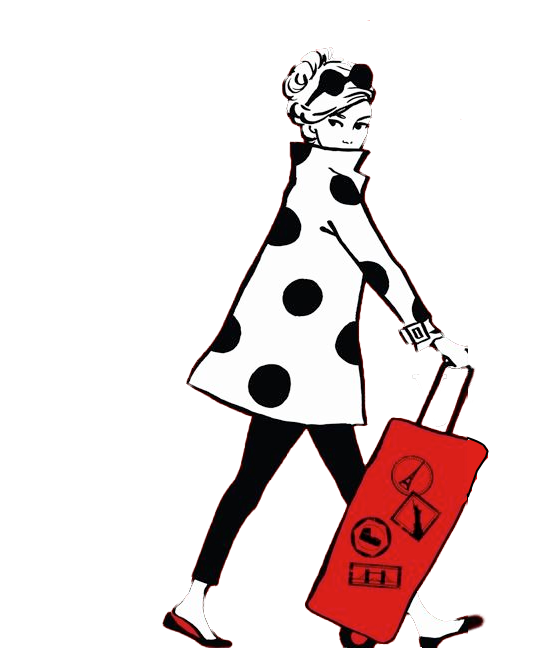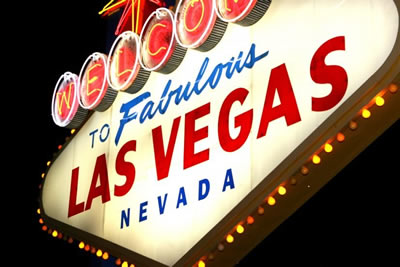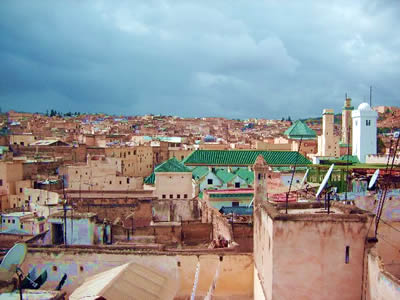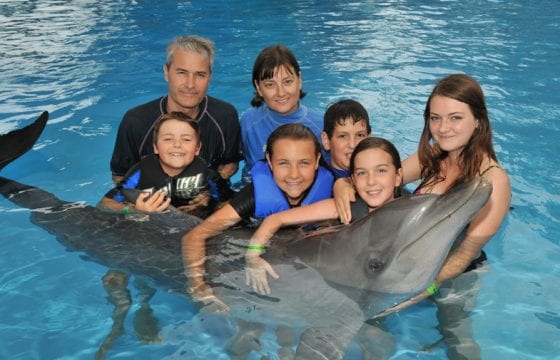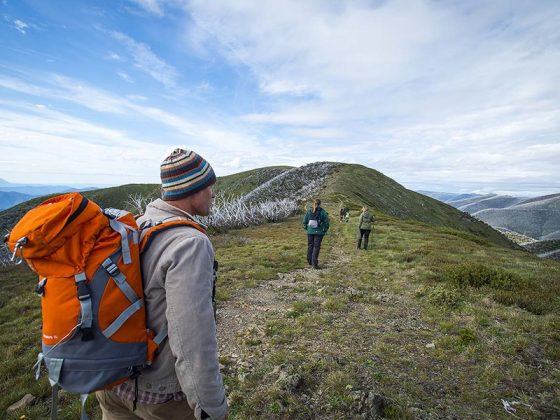Julie Moline discovers the Liberace Museum – and a chocolate recycling plant – among other offbeat cultural landmarks in Las Vegas.
Casinos, befeathered showgirls, Elvis impersonators and a seemingly endless stream of Cirque du Soleil shows have so dominated the image of Las Vegas that many travelers overlook its quieter marvels: pretty parks, a few interesting historical sites, more than a few spectacular natural attractions. And thanks to a clutch of small, noteworthy museums, Las Vegas is now longer a cultural wasteland.
Here are four to note:
The Las Vegas Natural History Museum focuses on wildlife indigenous to the region and in various ecosystems around the world; there’s an African Rainforest Exhibit (with a fairly dramatic recreation of a thunderstorm) and a Wild Nevada Room, which showcases the harsh beauty of the Mojave Desert. Particularly fascinating, especially for kids, is a large glass case for viewing burrowing rodents under the recreated desert floor, where they wriggle to escape the heat of the summer day. The museum also features frescos galore, galleries full of taxidermied wildlife, a dinosaur den, a live shark exhibit, and the MGM/Mirage Young Scientist Center, which encourages kids to listen, touch, smell and dig in a cute fossil sandbox. http://www.lvnhm.org.
When the Bellagio Gallery of Fine Art opened, critics thought it was sheer insanity to spend millions of dollars on art that guests wouldn’t notice on the way to the casino. But they do notice the art—beginning with the lobby, where a glass ceiling installation by Dale Chihuly, one of the most accomplished contemporary glass artists, is mounted. It’s composed of 2,000 individual glass flowers, and it’s a stunner. In the gallery itself, there are several noteworthy pieces (Warhol, Calder), but the space’s strongest suit is as a venue for major touring exhibitions. http://www.bellagio.com.
Liberace, the entertainer who apparently never heard of the concept of subtlety, founded the Liberace Museum in 1979 as, perhaps, an act of noblesse oblige, to allow his fans to pay homage to his taste (if that’s the word) in all things glittered, mirrored, gilded and otherwise encrusted; and to endow the Liberace Foundation for the Performing and Creative Arts, which has funded scholarships since 1976.
The museum is divided into two areas. The first houses the Piano, Car and Award Galleries, and the second showcases the Costume and Jewelry Collections, plus a re-creation of Liberace’s own glam bedroom at The Cloisters, his Palm Springs estate. Think of every rococo boudoir cliché you can, and it’s there, down to the ridiculous chandelier over the bed.
Liberace owned 39 pianos, 18 of which are on display. His musicianship may have been suspect, but he did idolize the greats, and collected their instruments: Chopin’s French Pleyel, Schumann’s Bosendofer Grand, George Gershwin’s Chickering baby grand. Liberace’s favorite Baldwin concert grand piano announces itself in fortissimo: it is covered with thousands of mirror tiles.
Then there are the impossibly ornate cars: the Rolls Royce covered with mirror tiles etched with galloping horses; the 1934 Mercedes Excalibur completely covered in Austrian rhinestones. The real showstoppers, though, may be what Liberace wore as personal adornments. If it gleamed or sparkled or was over the top, Himself loved it. One of his most famous costumes, the King Neptune, is covered in 200 lbs. of sea shells and pearls. (If Liberace had been in trouble with mobsters in Vegas, they could just dump him in the reservoir wearing that thing—they wouldn’t have had to bother with cement overshoes.) Also on view are various feathered capes, furs, including a black mink lined with 40,000 2.5-karat Austrian rhinestones, and stage jewelry —a candelabra ring with platinum candlesticks and diamond flames, a piano-shaped watch with diamonds, rubies, sapphires and emeralds, and, true to form, the world’s largest Austrian rhinestone, a behemoth at 115,000 carats.
You can’t miss the building; it’s got a red neon piano on the roof. http://www.liberace.org
Some people believe chocolate is art, so a visit just outside city limits to Ethel’s Chocolate Lounge factory—once the slightly more plebian sounding Ethel M Chocolates factory—could be considered cultural. But don’t just go for the truffles, divine as they are. The chocolatier also offers tours of what it calls the Ethel M Living Machine®, a water recycling plant. Bacteria, algae, protozoa, snails, fish, reed beds and marshes remove pollutants from the industrial wastewater, allowing it to be cleaned without any chemicals. The end result: water clean enough to be used for landscape irrigation, air-conditioning systems and vehicle washing. While conventional wastewater treatment systems produce a large amount of sludge (which requires disposal), this process converts any resulting solid waste into compost, much in demand in the desert Southwest.
Prefer plants to roaming around purification tanks? Both the compost and the treated water are used in the adjacent Ethel M Chocolates’ Botanical Cactus Garden, Nevada’s largest and one of the world’s largest collections of its kind. Based on the English landscape model of naturalistic design, the garden displays four acres of drought-tolerant ornamentals, cacti, and other succulents—more than 300 species of plants in all. Half are native to the American Southwest, and the rest are desert trees and shrubs from the Southwestern U.S., Australia, and South America, chosen both for the beauty of their floral displays and their ability to adapt to the punishing climate of Southern Nevada. Appropriately enough, some of the rock in rookeries is Utah Bali Hai “chocolate” rock. Visiting the garden is free; you’ll pay for it later, after you’ve eaten all the boxes of chocolates you meant to give to friends. http://www.ethelm.com
